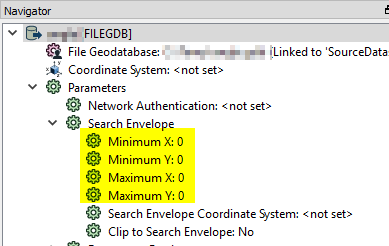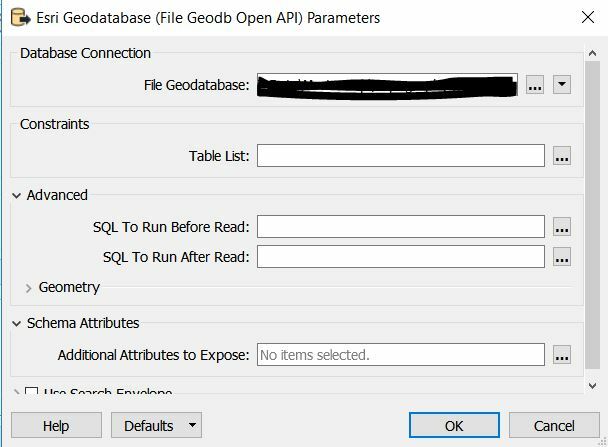Hi,
I can't seem to find anywhere the sql syntax for performing a geometry filter in the where clause of the File Geodatabase - (Esri Geodatabase (File Geodb Open API) Reader). I would like to only read in geometry of a certain min x, min x, max y and max y bounding.
Also, is using the 'where' clause for this the quickest way of filtering a File Geodatabase? I have millions of records so need to optimize the filtering.
I am using FME2017.1
Thank you in advance.





